MARIANI’SVirtual
Gourmet
October
20, 2013
NEWSLETTER
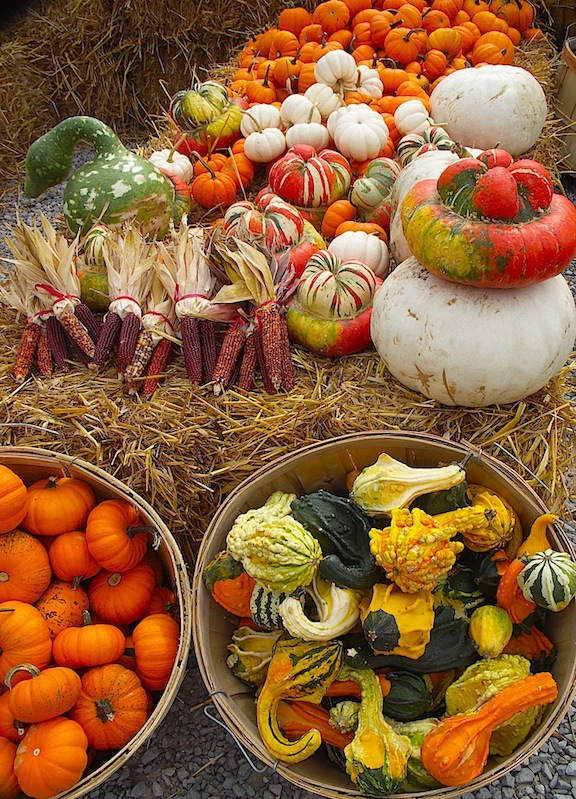
"Autumn
Squash, Michigan" by Galina
Dargery (2012)
❖❖❖
THIS
WEEK
LONDON,
Part Two
by John Mariani
NEW
YORK CORNER
PIORA
by John Mariani
NOTES
FROM THE WINE CELLAR
Boroli Barolos
by John Mariani
ANNOUNCEMENT
ON OCTOBER 22nd at 7 PM at Hofstra University in Hempstead, NY,
John Mariani will give a talk on his book How Italian Food
Conquered the World, Leo in the A.
Guthart Cultural Center Theater, Joan and Donald E.
Axinn Library, First Floor South Campus. Admission is
free. For info call (516) 463-5669. . .
. ON OCTOBER 23rd John Mariani will give a talk
at Zooma Trattoria in Providence, RI, about
his book Menu
Design in America, from 1850 to 1985,
which won the International Gourmand's Best Book
Award.
Signed
copies will be for sale. $15 admission, $5
with student ID; free for paid-up CCCP members (free
pizza/snacks, free valet parking, cash bar). Space is
limited. For info call 401-253-0215 or contact us at
rmariani@fullchannel.net.
❖❖❖
LONDON, Part Two
by John Mariani
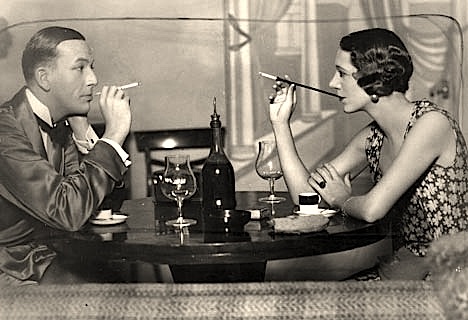
Noël Coward and Gertrude Lawrence in "Private Lives" (1930)
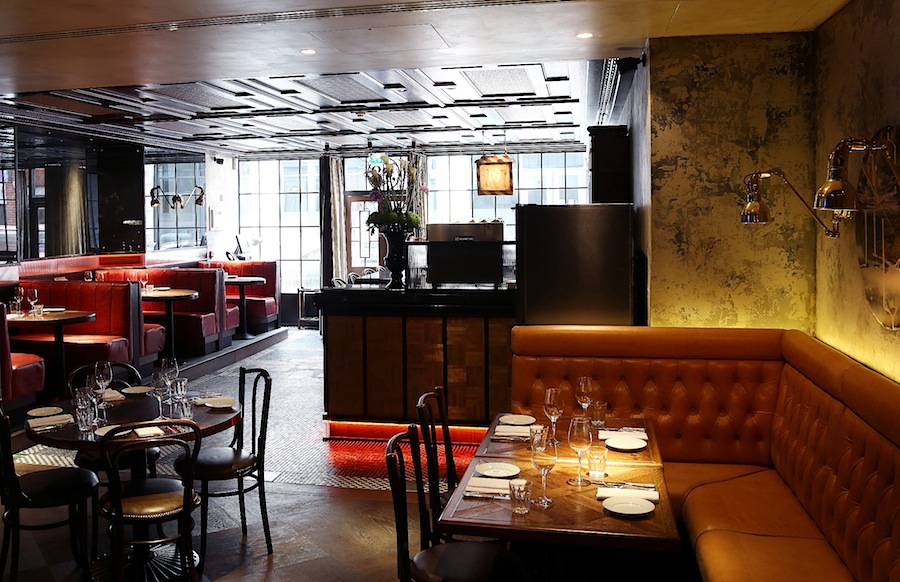 SOCIAL
EATING HOUSE
SOCIAL
EATING HOUSE
58 Poland Street
+44-020-7993-3251
www.socialeatinghouse.com
After
huge success with his first restaurant, Pollen
Street Social, Jason Atherton has another on his
hands with the similarly named Social Eating House,
which sounds more like a charity home for Oliver
Twist orphans. Instead it is a casual, quite
comfortable bistro with a fervent crowd of
well-dressed Londoners.
The place
looks older than its April debut, with exposed brick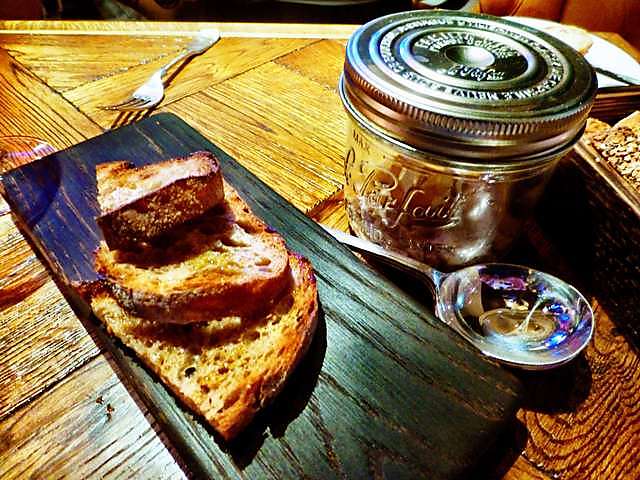 walls—now
the standard international style for every other new
restaurant--white-washed copper ceilings, bare
tables and weathered leather banquet seats.
walls—now
the standard international style for every other new
restaurant--white-washed copper ceilings, bare
tables and weathered leather banquet seats.
They’ve named the
bar the Blind Pig, 19th century slang for a
speakeasy, where bartender Gareth Evans has given
his own names to cocktails like the Thermonuclear
daiquiri and Scrub a Dub Dub. Downstairs is a
so-called ‘Employees Only’ dining space with its own
bar and menu fitted out for a private party.
The food here is designated as a
“contemporary bistro menu paying homage to the best
of British cooking with international influences,”
which pretty much describes that of almost every
non-ethnic restaurant of recent years in town. But
Chef Paul Hood is turning out delicious, lusty food
in sizable portions, with a selection of snacks
contained in jars (right),
like confit
pork rillette with grain mustard, apple and cider
vinegar, and a creamy brandade with potato chips,
celery salt and vinegar. Wild mushrooms are riddled
with garlic and served on toast with a cèpe
puree, and there is a smoky Black Angus tartare with
crisp radishes, 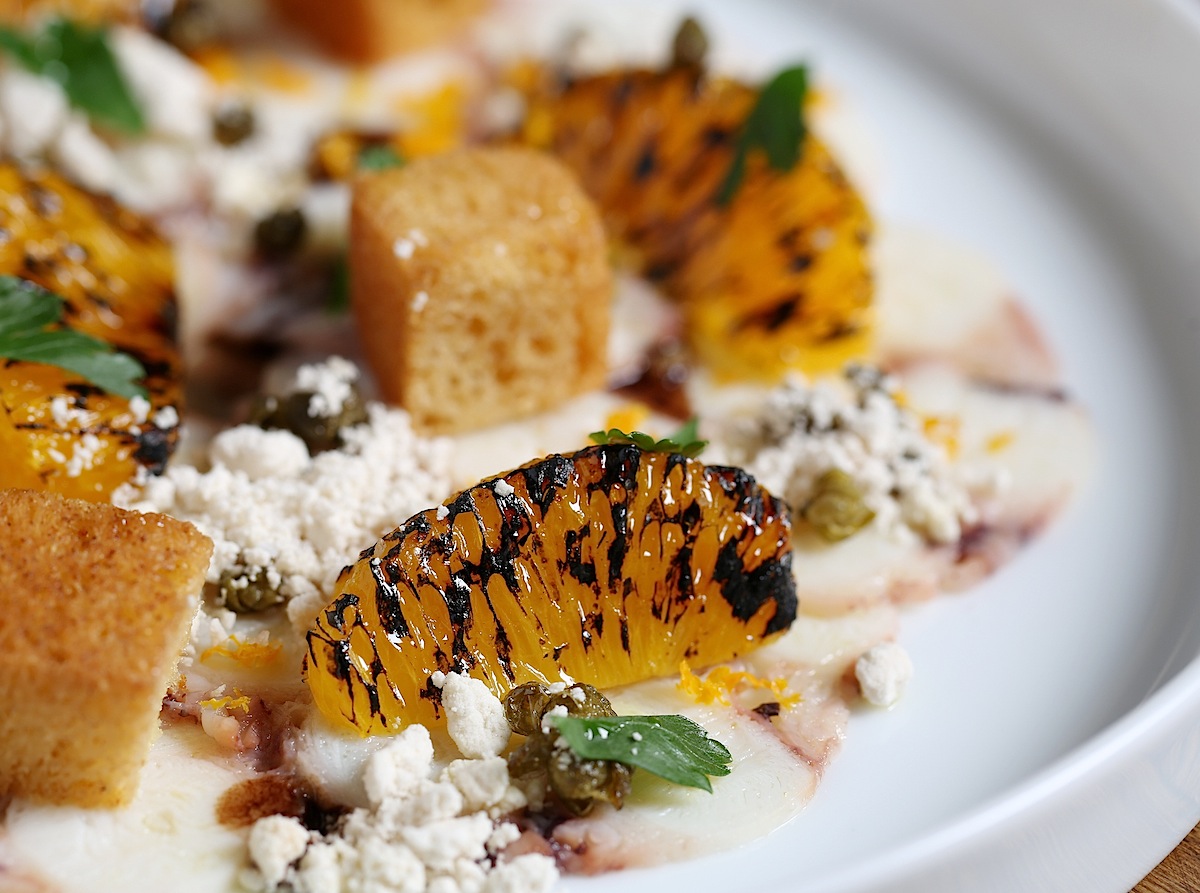 stinging
horseradish and mustard leaf. Lamb neck fillet comes
with ricotta-enriched potatoes, chicory-like monk’s
beard, garlic and parsley. Charred grapefruit
sections set up the saline flavor of octopus
carpaccio (left).
stinging
horseradish and mustard leaf. Lamb neck fillet comes
with ricotta-enriched potatoes, chicory-like monk’s
beard, garlic and parsley. Charred grapefruit
sections set up the saline flavor of octopus
carpaccio (left).
I was
delighted by the sweet Colchester crab on lettuce
with tomato and a roast tomato vinaigrette, as
well as with the meaty, rolled smoked ham knuckle
with leeks cooked over burning embers. There
is something wonderfully old fashioned about
Hood’s cooking, yet it’s really all his and
happily new to me.
There is
also a selection of steaks, including—not often
seen in the UK—45-day aged smoked Buccleuch
côte de boeuf for two.
The desserts at Social Eating
House range from sumptuous sundaes of pina colada
ingredients and citrus meringue to a honey-almond
sponge cake with goat’s cheese curd ice cream and
orange.
For a
place this size and with such homey ambitions, the
wine list is admirable in its size and obvious
care of selections with numerous bottlings under 40
pounds.
Lunch Mon.-Sat., dinner nightly. Starters are
priced between £6-8 and mains are
approximately £12-18.
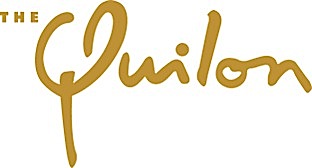
51 Buckingham Gate
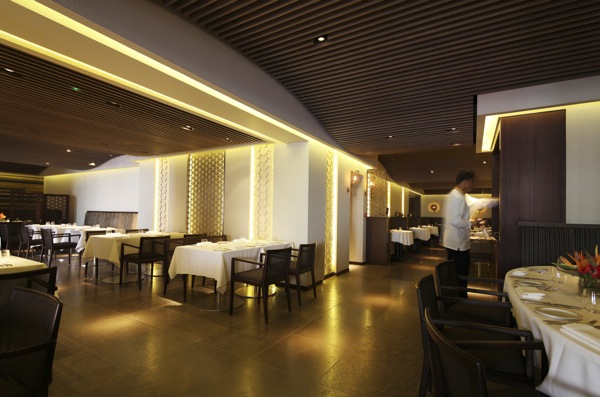
+44 (20) 7769 7766
51-buckinghamgate.co.uk
Certainly, Malaysia and New York have a slew of very good ones, but Great Britain's connection to India goes back to 1600 with the founding of the East India Company and, through periods of colonialism and rebellion, England has had an enormous affinity for India, and, largely vice-versa, with the food cultures of both nations intimately related.
This symbiosis can be seen as readily in the ambiance of the Taj 51 Buckingham Gate Hotel as in the beautiful restaurant Quilon within it. The hotel, with 86 rooms, is just around the corner from Buckingham Palace, tucked away in its own cul-de-sac, and I
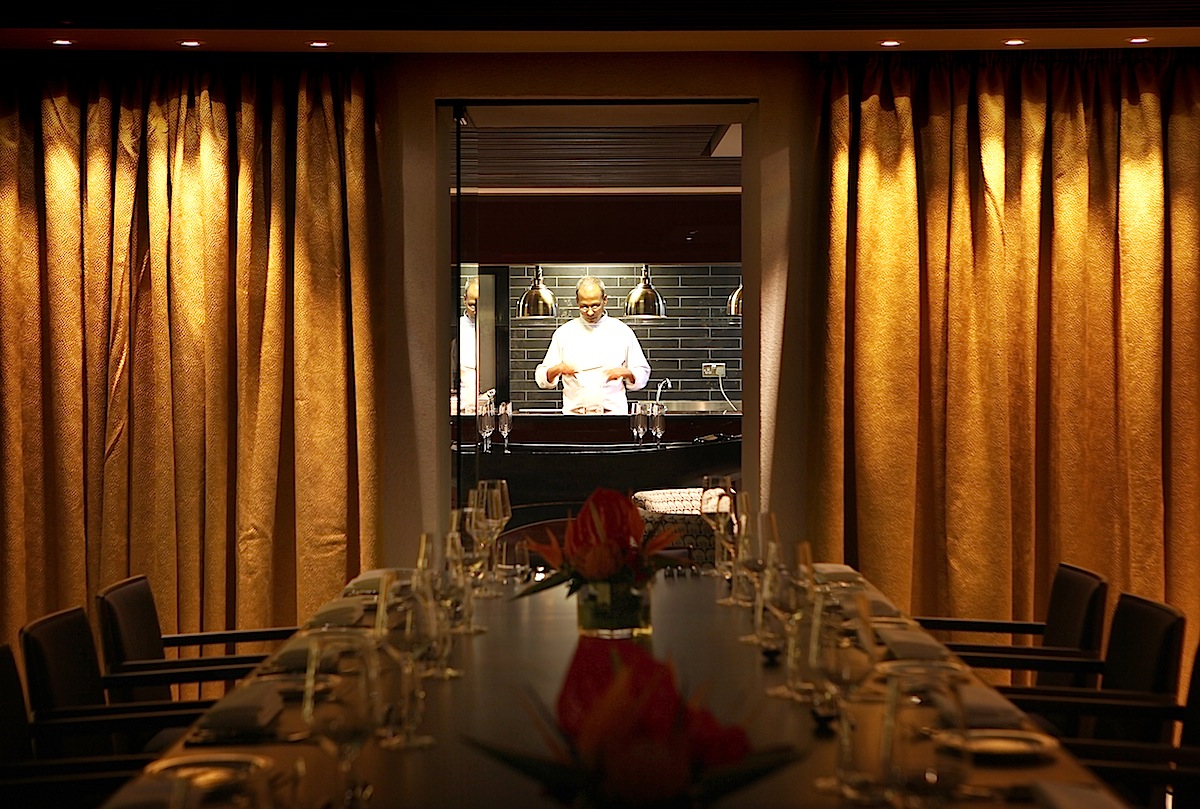 found it a very quiet place
to stay, sequestered from the tourist crowds.
found it a very quiet place
to stay, sequestered from the tourist crowds.
The building has a marvelous red brick-and-stone
façade reached through an archway and
wrought iron gate, and the connected mansions that
comprise the quarters are centered by a calm
fountain and rung round with what is said to be
the longest frieze in the world. The reception and
attention to detail is both unobtrusive and
helpful, with items that had not even popped into
my mind, as when the concierge asked if he might
check my flight and print out my ticket.
The Quilon, named
after a Kerala seaport, features the southern
coastal cuisine of Chef Sriram Aylur (left), whose dependence
on the very finest British provender
distinguishes the food here from lesser Indian
restaurants in the city. The food also
tends to be a bit lighter, the sauces and
gravies more refined and complex than merely
spicy.
The shimmering dining room (above), now with its own new Q Bar, is twelve years old and has been refurnished completely this year, with jaali screens and a candle wall of tea lights. The wine list is not just deep and broad for an
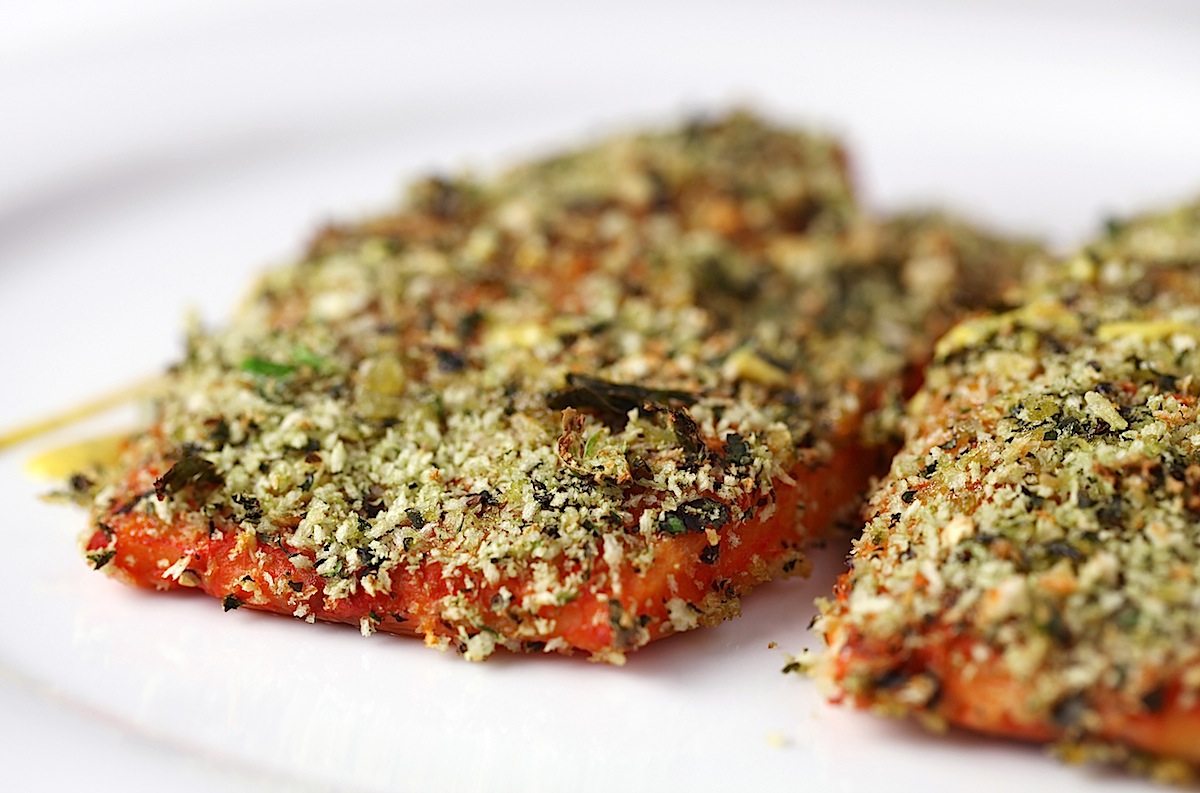 Indian
restaurant but for any restaurant at this level of
posh, and Master of Wine Peter McCombie keeps it
that way, along with a list of 50 whiskeys and 20
beers.
Indian
restaurant but for any restaurant at this level of
posh, and Master of Wine Peter McCombie keeps it
that way, along with a list of 50 whiskeys and 20
beers.I was presented with crisp pappadum wafers with dipping chutneys of tomato and coconut. They also serve you a hot drink of spicy tamarind and tomato juice to cleanse the palate, which indeed it did on a brisk afternoon.
The breads, especially the Malabar paratha, was extremely flaky, almost like phyllo, and very buttery; indeed, the kitchen does use ghee, India’s rich butter, which has of late been eschewed by so many Indian restaurants.
Do not expect the food here to be highly spicy, as in hot spicy. You may ask for it to be made that way, but the complexities and subtleties of the myriad spices actually used may be blunted by too much heat. This is more refined cuisine, impeccably served in beautiful surroundings.
You might begin with mini masala dosa rice-lentil pancakes filled with potatoes and vegetables, served with sambhar coconut chutney.
Coconut cream chicken with ground coconut, chili and cumin, cooked over a griddle I found a little bland, the only dish I wished had been spicier, but the batter fried shrimps cooked in a coconut masala sauce tipped the balance, with onion tomato, mustard and curry leaves.
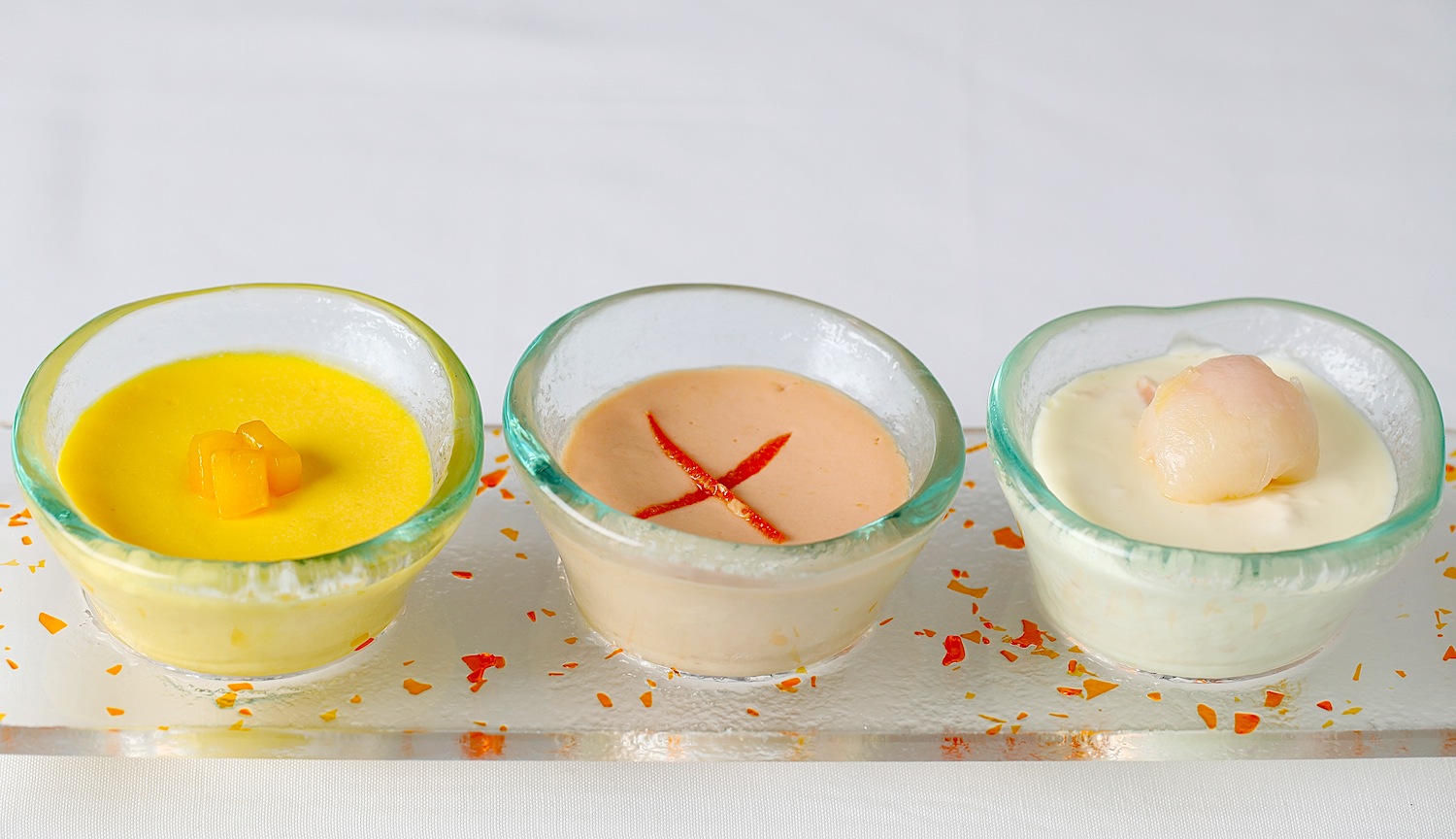 There is, too, a good deal of
lamb on the menu, including Malabar lamb biryani cooked with steaming,
fragrant basmati rice in a sealed pot. And,
of course, there are savory vegetarian dishes,
too, including a three-bean masala--cannellini,
chili and white kidney beans cooked in a wide
range of spices.
There is, too, a good deal of
lamb on the menu, including Malabar lamb biryani cooked with steaming,
fragrant basmati rice in a sealed pot. And,
of course, there are savory vegetarian dishes,
too, including a three-bean masala--cannellini,
chili and white kidney beans cooked in a wide
range of spices. There are some delectable desserts, all freshly made—not always the case in Indian restaurants—like caramelized banana pudding parfait and a Goan specialty called Bibinca and Dodhol of thin coconut crêpes with vanilla ice cream. The cooked yogurt (left) is to swoon for.
It is no surprise to find that The Quilon has garnered a rare Michelin star, which is supposed to be largely for the quality of the food. But this is one Indian restaurant as sophisticated and luxurious as any dining room in London, for which I would certainly award another star. With its sister restaurant Bombay Brasserie and a few other fine Indian restaurants around town like Tamarind and Benares, my contention about London’s supremacy in this culinary category seems well secured.
Open daily for lunch and dinner; three-course fixed price menu £24. (All prices include
NEW YORK CORNER
by John Mariani
PIORA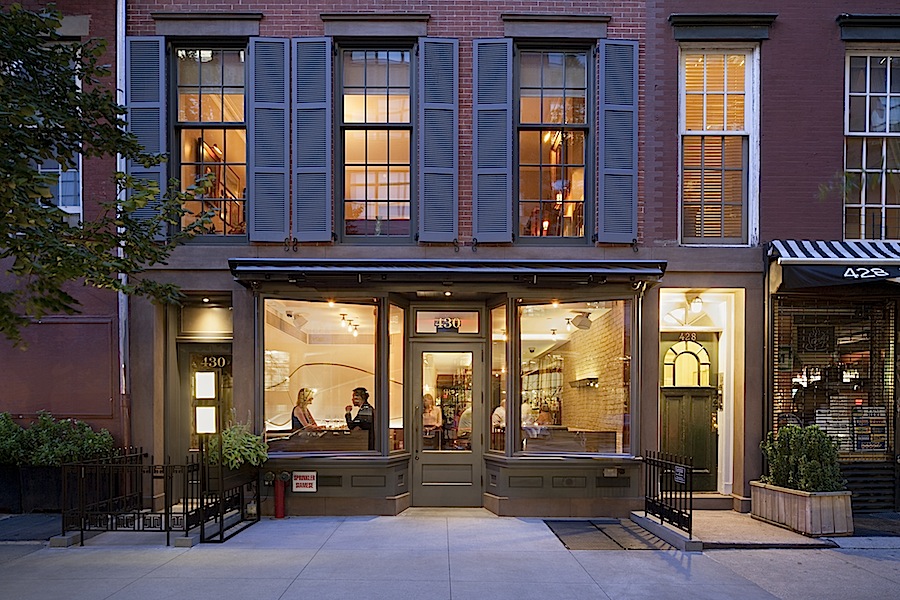
430 Hudson
Street (Leroy Street &
Morton Street)
212-960-3801
www.pioranyc.com
With so many, many, many restaurants
serving exactly the same menu as do their
competitors, it is encouraging to find a new
place whose partners are not playing it so safe,
instead imparting their own food cultures on the
menu and design.
This is the case at Piora, which
means “blossom” in Korean and evokes owner-manager
Simon Kim’s background. On the other hand, the
chef-partner is an Italian-American guy, Christopher
Cipollone, who brings to the kitchen his own
culinary history, and the mix works very well,
without any gimmicks, without any overexplaining.
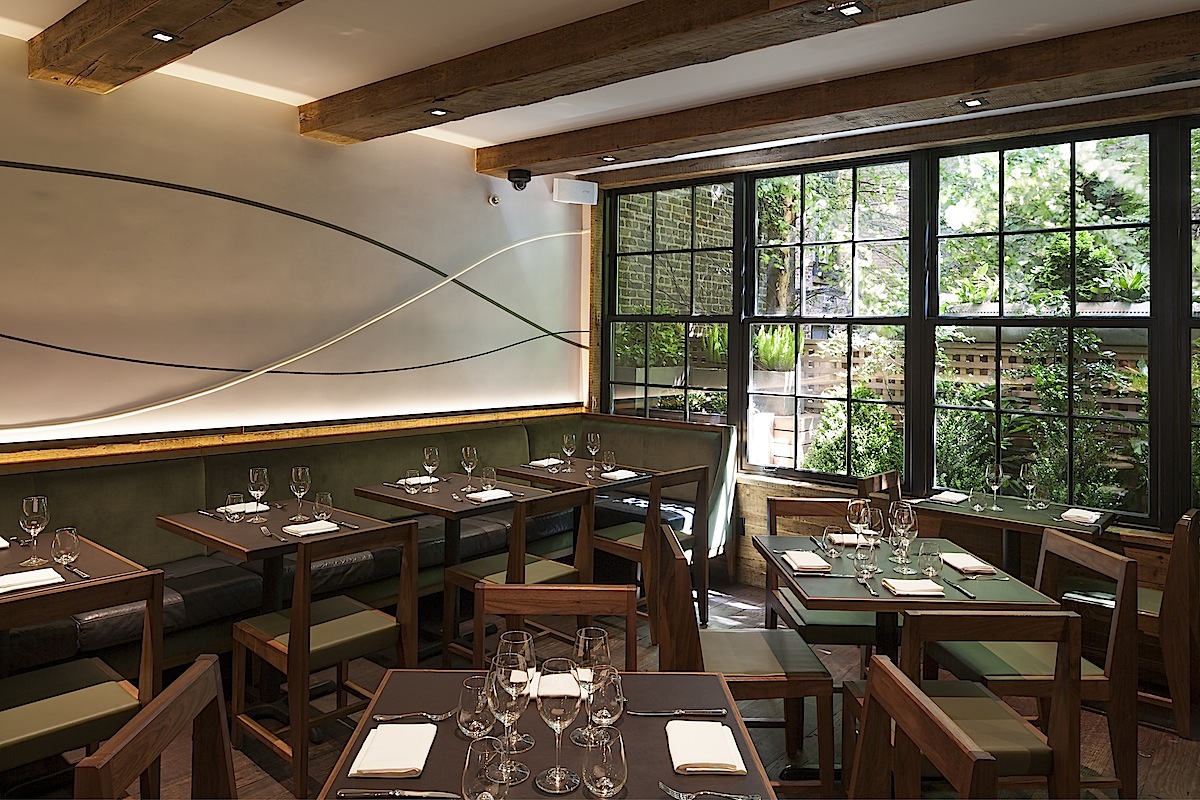 Designer Stephanie Goto
has provided Piora with a front-room communal table
and stone-topped bar. From, there you go through
small alcove and on to the Hudson Room, which itself
opens onto an outdoor garden. A meandering
mural intended to resemble a blossoming flower
extends throughout the restaurant.
Designer Stephanie Goto
has provided Piora with a front-room communal table
and stone-topped bar. From, there you go through
small alcove and on to the Hudson Room, which itself
opens onto an outdoor garden. A meandering
mural intended to resemble a blossoming flower
extends throughout the restaurant.
Seoul-born
Kim
was most recently at The Mark uptown, and Cipollone
at Tenpenny. Beverage director Kyle Ridington came
here from The Mark, and before that from Chicago’s
L20. Their total resumes would be a screed indeed of
top restaurants throughout the country.
The
menu
is tightly crafted to reflect a kitchen I’m told has
only four burners, and the dining rooms’ 50 seats
are always occupied after 7 pm, so Cipollone keeps
his recipes to a minimum of ingredients, so that all
of them have to be of superb quality. With
nothing on the menu over $34, Piora hits a sweet
spot for dining seriously well while dining
casually, though the noise level 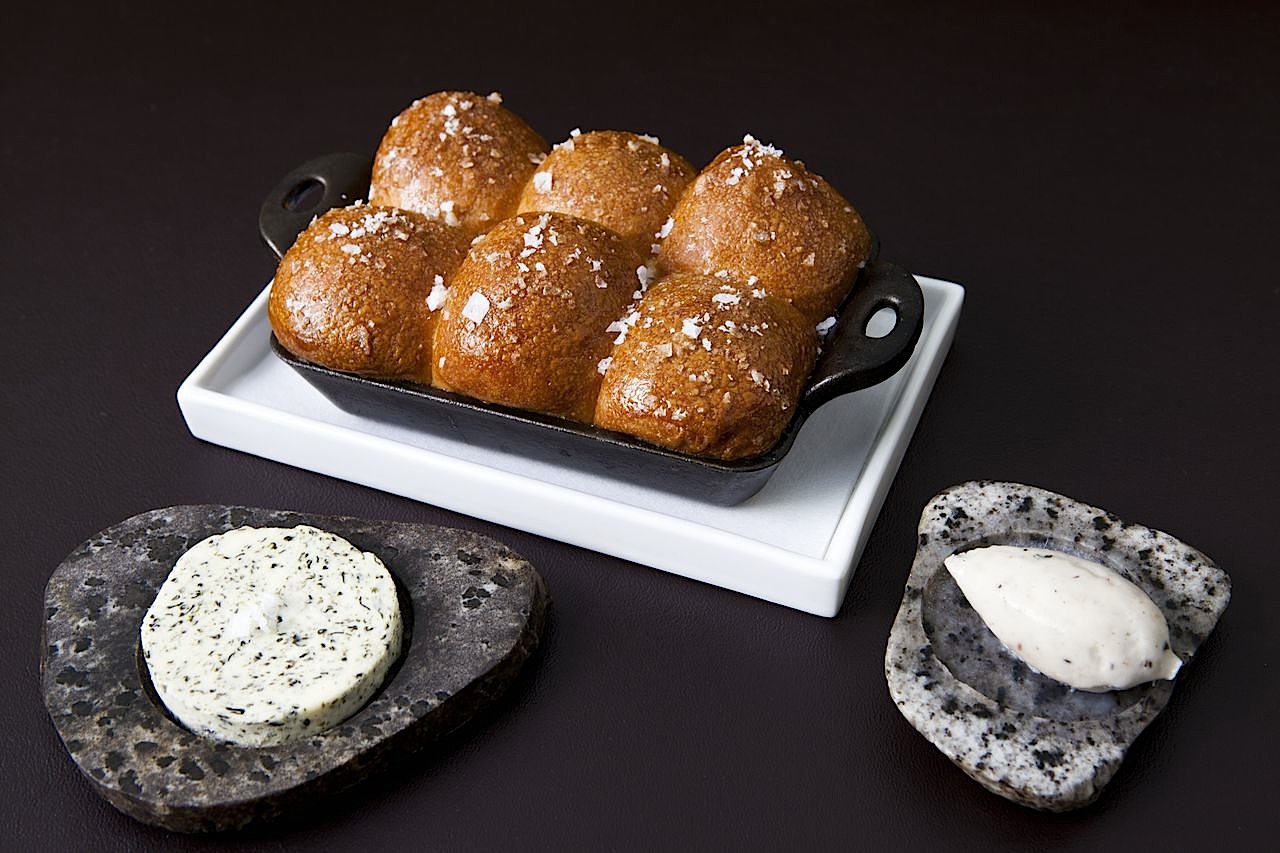 mounts during the evening.
mounts during the evening.
We
began
with some irresistible monkey bread (right), kind of
like puffy Parker House rolls, with whipped lardo (nice
touch) and seaweed butter (meh). There are nine
appetizers, three pastas, and five main courses, and
three vegetables. I liked the duck confit,
which came with Earl Grey tea, sweet plum and
cucumber, showing a Franco-Anglo side to the menu.
Barbecued
octopus
was tender, with fermented peppers, basil and the
crunch of pine nuts, while an egg came with chicken
wing, potato and artichoke barigoule
to make for a whimsical but perfectly logical
combination.
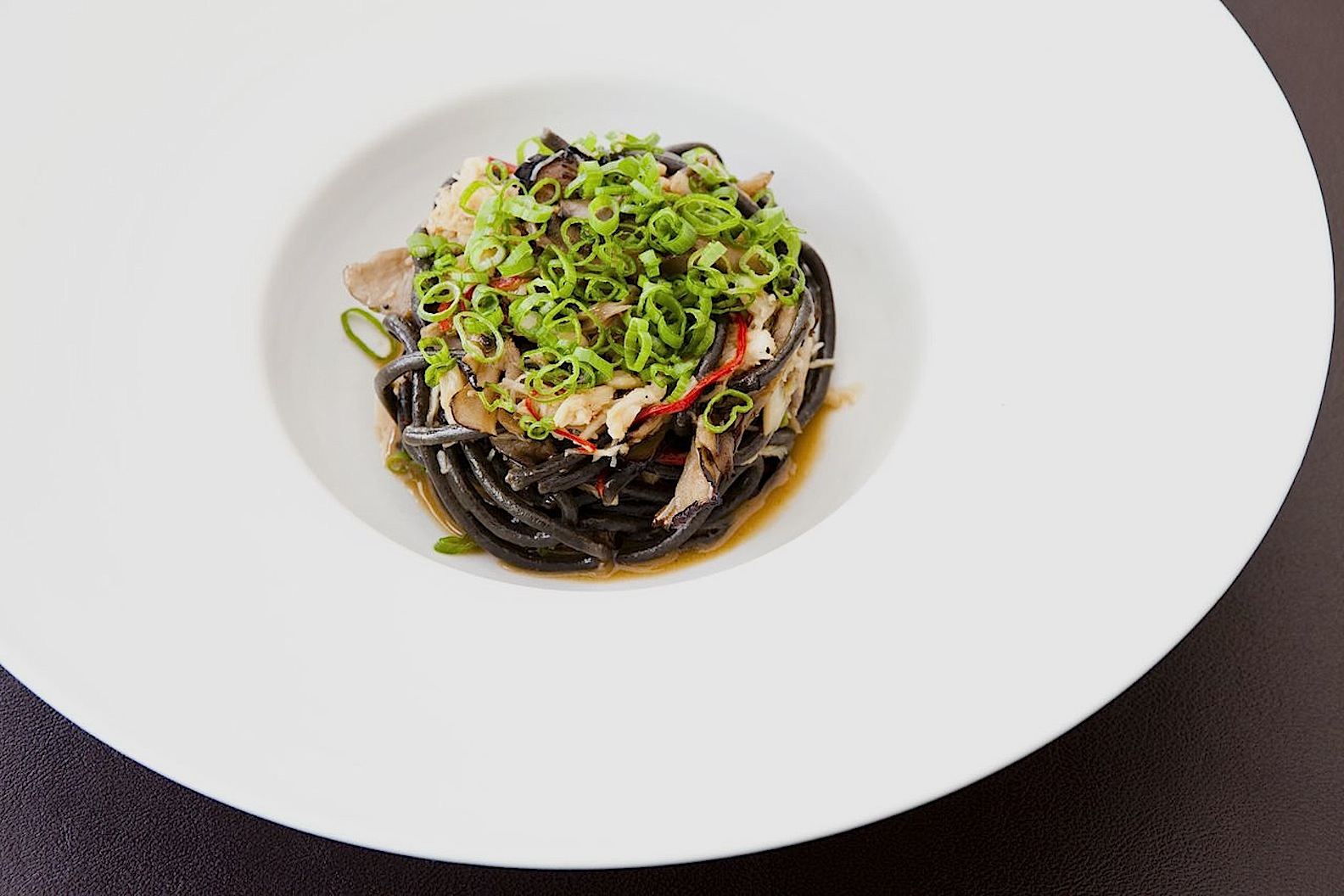 My
favorite dish of the evening was al dente bucatini pasta
(left) with
black garlic, Dungeness crab and maitake
mushroom chili; the noodles were nice and firm, the
crab sweet and the spicing just enough to spark the
entire dish.
My
favorite dish of the evening was al dente bucatini pasta
(left) with
black garlic, Dungeness crab and maitake
mushroom chili; the noodles were nice and firm, the
crab sweet and the spicing just enough to spark the
entire dish.
I
enjoyed
the succulent suckling pig with radish, burdock and
apple as an early autumn dish. Halibut came
with chanterelles, squash, and brown butter fumet,
but the halibut, essentially a bland fish, needed
more help to pump up its flavor.
There
are housemade sorbets and ice creams and a selection
of cheeses, along with desserts like a darling
strawberry cotton shortcake with yuzu, sesame and
elderflower, and a chocolate raspberry tart with
pistachio, lychee and rose.
Piora
is
firing on all cylinders right now and has become one
of the go-to places of the moment in the West
Village. I found some dishes needed more intensity,
which should come with time—and maybe a couple more
burners in the kitchen. Right now, it makes a
mark as a work in progress.
Open for dinner Mon-Sat.
Appetizers $8-$18;main courses $23-$34.
BOROLI BEATS PRICE EXPECTATIONS FOR FINE BAROLO
by John Mariani
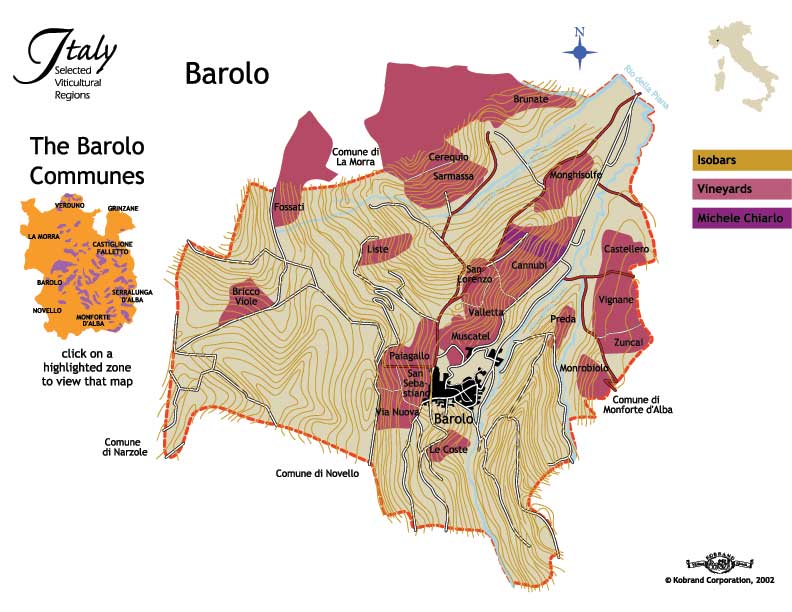 To
judge how far barolo has come in the past three
decades, check out the prices on some of these
better-known bottlings: Angelo Gaja “Sperss” goes for
$315; Brovia Monprivato, $372, while Giacomo Conterno
Monfortino Riserva costs $638.
To
judge how far barolo has come in the past three
decades, check out the prices on some of these
better-known bottlings: Angelo Gaja “Sperss” goes for
$315; Brovia Monprivato, $372, while Giacomo Conterno
Monfortino Riserva costs $638.
Pretty remarkable for a regional
wine that some producers were giving away before
1980. “In the 1970s, if you bought one bottle of
cheap dolcetto in Piedmont, you’d get a bottle
of barolo free,” says Achille Boroli (below),
36-year-old winemaker and owner of Boroli winery
in Alba in the heart of the barolo region.
Barolo enjoyed a high reputation
at the beginning of the last century, then
quality deteriorated as volumes increased.
Yet today barolo, named after a local village and made
from the nebbiolo grape, is now considered one of
Italy’s most prestigious red wines. It was one of
only three wines awarded the government’s
Denominazione di Origine Controllata Garantita (DOCG)
status in 1980, when that classification was
introduced.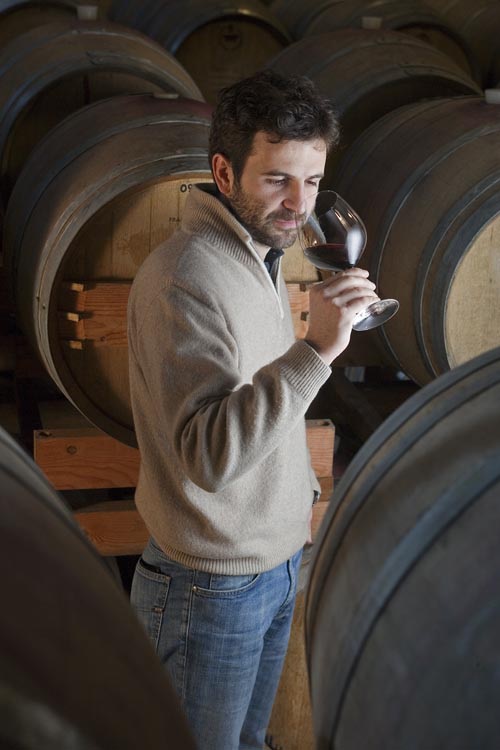
Since then, hundreds of newcomers
have entered the fray. Wine-Searcher.com shows
500 different barolo labels on its website, and
that’s only a partial list. The approved zone
for planting barolo is not huge but takes in
about a dozen villages in Piedmont, leading to
variations in soil and style of the finished
wine.
Barolo is always a big, highly
concentrated wine, which by DOCG law must spend
at least three years aging, two in oak
or chestnut barrels. A riserva must age for five
years, two in barrel. Old style barolos are said
to require ten years of additional aging in
bottle to reach their prime.
Newer styles of barolo are usually aged in smaller
French barriques, with less tannins, so the wines
are fruitier, a direction that has pitted the old
timers against the new guys in the “Barolo Wars.”
Boroli’s wines are clearly of the
newer camp. Achille’s father, Silvano, whose
family is in the publishing industry, bought
prime vineyard property in the Langhe region of
Piedmont in 1997. Today it is a small production
winery with a range of wines in addition to
barolos. The company has also opened Locanda del
Pilone, a small hotel and restaurant with a
cooking school.
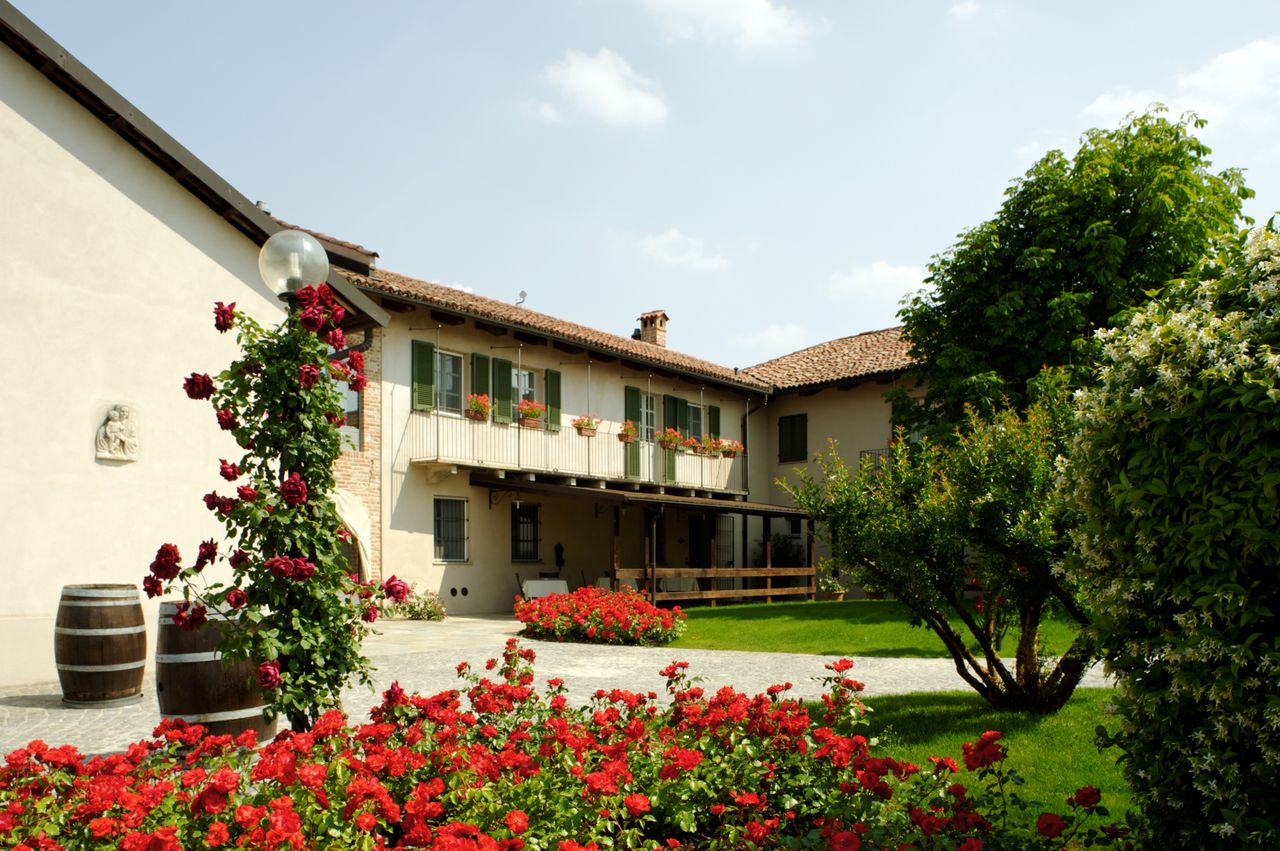 At a tasting
with Achille Boroli at Sandro’s restaurant in New York
over plates of gnocchi with burrata cheese and
onion-and-bacon-rich spaghetti all’amatriciana, I was
delighted to find the barolos he brought were
very easy to drink right now; you certainly
wouldn’t need to wait ten or even five years
for them to achieve their peak. All had a
signature of black and white pepper components.
At a tasting
with Achille Boroli at Sandro’s restaurant in New York
over plates of gnocchi with burrata cheese and
onion-and-bacon-rich spaghetti all’amatriciana, I was
delighted to find the barolos he brought were
very easy to drink right now; you certainly
wouldn’t need to wait ten or even five years
for them to achieve their peak. All had a
signature of black and white pepper components.
Starting with the most youthful,
the 2008 Barolo ($40), which spent two years in
barrel and 18 months in bottle, showed the power
of the nebbiolo varietal as well as its
earthiness, distinguishing barolo from other
Italian reds like Chianti Classico or Piedmont’s
other great red wine, barbaresco. The 2008’s
tannins are still not softened up but the fruit
is splendidly forward already.
The 2007 Cerequio Barolo ($79),
from a First Category Cru vineyard, was
magnificent, reaching every taste bud on
the palate and revealing velvety tannins and the
scent of truffles in the nose. Here you find the
explosive power of barolo, along with a finish of
great elegance, all at 13.5 percent alcohol.
Boroli’s Villero Barolo ($71),
also from 2007, comes from the region of
Castiglione Falletto, known to produce a
somewhat fuller-bodied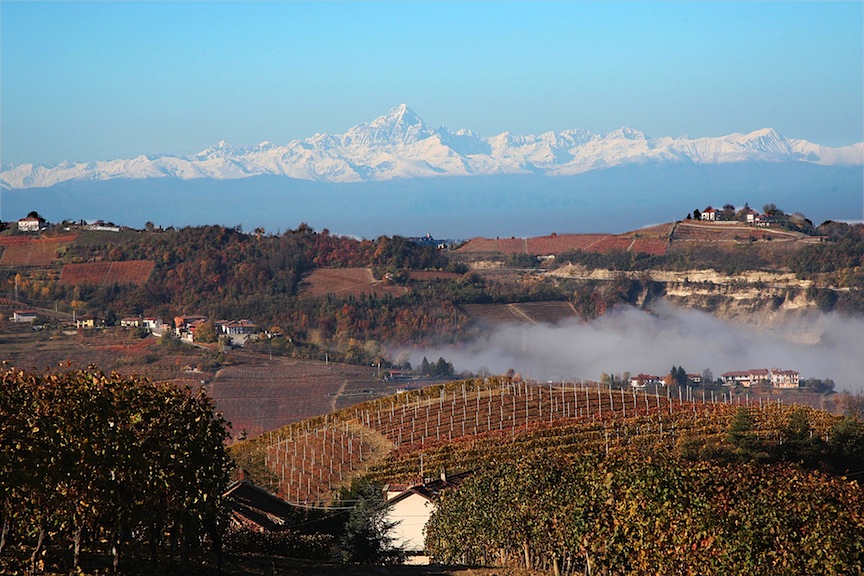 wine -- this
one has 14.5 percent alcohol -- that takes its
time coming into focus.
wine -- this
one has 14.5 percent alcohol -- that takes its
time coming into focus.
I found this, like the other
Boroli examples, ripe and achieving a balance of
fruit, acid and tannins that echo older styles
but are indicative of the sound modern
winemaking techniques of the region today.
I also got
to taste Boroli’s Chinato ($67), an
interesting vermouth-like wine infused with the
bark of the South American cinchona bark, which
the people of Piedmont believe helps prevent
malaria. The sickness isn’t much of a problem in
Italy anymore, but the wine endures as a dessert
beverage.
In the “Barolo Wars” I try to
remain neutral, though I have long cherished the
chance to taste very old or old-style barolos
that reveal the tastes of another era. As I get
older, however, the happier I am to find young
winemakers like Achille Boroli who have carefully
crafted a newer style without compromising
barolo’s essential character.
Many other Giovanni-come-lately
winemakers have, and their sales have suffered as
a result.
This article first appeared in
Bloomberg
News.
 ONE CAN ONLY
IMAGINE HOW THIS MORON WOULD
ONE CAN ONLY
IMAGINE HOW THIS MORON WOULD
HONOR THE PUNK BAND "DEAD KENNEDYS"
Kuma's Corner, a "heavy metal
burger joint" is featuring a "Ghost burger"
with a red wine reduction to represent "the blood of
Christ" and garnished with an unconsecrated
communion wafer. The owner told the local
newspaper that the "Ghost" burger is "not a commentary
on the state of religion or anything like that" but as
a tribute to the Swedish band Ghost B.C. (left),
whose lead singer often wears the outfit of a Roman
Catholic Cardinal."We think is a fitting tribute to
the supreme
blasphemous activities carried out by the
band itself. "
BUT WHY TAKE THE
CHANCE?
“Monzo's
udon are even in their rectangular profile, dense but
not grainy, elastic more in terms of flexile strength
than in actual stretchiness. If you twined enough of these udon
around itself, you could probably hang a modest
suspension bridge from them, but you would still be
able to bite through the noodles in a single
go.”—Jonathan Gold, “Marugame
Monzo is all about udon,” LA Times.
If you twined enough of these udon
around itself, you could probably hang a modest
suspension bridge from them, but you would still be
able to bite through the noodles in a single
go.”—Jonathan Gold, “Marugame
Monzo is all about udon,” LA Times.
Any of John Mariani's
books below may be ordered from amazon.com.
 |
My latest book, which just won the prize for best book from International Gourmand, written with Jim Heimann and Steven Heller, Menu Design in America, 1850-1985 (Taschen Books), has just appeared, with nearly 1,000 beautiful, historic, hilarious, sometimes shocking menus dating back to before the Civil War and going through the Gilded Age, the Jazz Age, the Depression, the nightclub era of the 1930s and 1940s, the Space Age era, and the age when menus were a form of advertising in innovative explosions of color and modern design. The book is a chronicle of changing tastes and mores and says as much about America as about its food and drink.
“Luxuriating vicariously in the pleasures of this book. . . you can’t help but become hungry. . .for the food of course, but also for something more: the bygone days of our country’s splendidly rich and complex past. Epicureans of both good food and artful design will do well to make it their coffee table’s main course.”—Chip Kidd, Wall Street Journal.
“[The menus] reflect the amazing craftsmanship that many restaurants applied to their bills of fare, and suggest that today’s restaurateurs could learn a lot from their predecessors.”—Rebecca Marx, The Village Voice. |
"Eating Italian will never be the same after reading John Mariani's entertaining and savory gastronomical history of the cuisine of Italy and how it won over appetites worldwide. . . . This book is such a tasteful narrative that it will literally make you hungry for Italian food and arouse your appetite for gastronomical history."--Don Oldenburg, USA Today. "Italian
restaurants--some good, some glitzy--far
outnumber their French rivals. Many of
these establishments are zestfully described
in How Italian Food Conquered the World, an
entertaining and fact-filled chronicle by
food-and-wine correspondent John F.
Mariani."--Aram Bakshian Jr., Wall Street
Journal.
"Equal parts
history, sociology, gastronomy, and just
plain fun, How Italian Food Conquered the
World tells the captivating and delicious
story of the (let's face it) everybody's
favorite cuisine with clarity, verve and
more than one surprise."--Colman Andrews,
editorial director of The Daily
Meal.com. "A fantastic and fascinating
read, covering everything from the influence
of Venice's spice trade to the impact of
Italian immigrants in America and the
evolution of alta cucina. This book will
serve as a terrific resource to anyone
interested in the real story of Italian
food."--Mary Ann Esposito, host of PBS-TV's
Ciao
Italia. "John Mariani has written the
definitive history of how Italians won their
way into our hearts, minds, and
stomachs. It's a story of pleasure over
pomp and taste over technique."--Danny Meyer,
owner of NYC restaurants Union Square Cafe,
Gotham Bar & Grill, The Modern, and
Maialino.
|
 |
 |
 |
 |
 |
 |
 |
 |
 Everett Potter's Travel Report:
Everett Potter's Travel Report: 
 Eating Las Vegas
is the new on-line site for Virtual Gourmet
contributor John A. Curtas., who since 1995
has been commenting on the Las Vegas food
scene and reviewing restaurants for Nevada
Public Radio. He is also the
restaurant critic for KLAS TV, Channel 8 in
Las Vegas, and his past reviews can be
accessed at KNPR.org.
Click on the logo below to go directly to
his site.
Eating Las Vegas
is the new on-line site for Virtual Gourmet
contributor John A. Curtas., who since 1995
has been commenting on the Las Vegas food
scene and reviewing restaurants for Nevada
Public Radio. He is also the
restaurant critic for KLAS TV, Channel 8 in
Las Vegas, and his past reviews can be
accessed at KNPR.org.
Click on the logo below to go directly to
his site.
www.EatingLV.com

Tennis Resorts Online: A Critical Guide to the World's Best Tennis Resorts and Tennis Camps, published by ROGER COX, who has spent more than two decades writing about tennis travel, including a 17-year stretch for Tennis magazine. He has also written for Arthur Frommer's Budget Travel, New York Magazine, Travel & Leisure, Esquire, Money, USTA Magazine, Men's Journal, and The Robb Report. He has authored two books-The World's Best Tennis Vacations (Stephen Greene Press/Viking Penguin, 1990) and The Best Places to Stay in the Rockies (Houghton Mifflin, 1992 & 1994), and the Melbourne (Australia) chapter to the Wall Street Journal Business Guide to Cities of the Pacific Rim (Fodor's Travel Guides, 1991).


MARIANI'S VIRTUAL GOURMET
NEWSLETTER is published weekly. Editor/Publisher: John
Mariani.
Contributing Writers: Christopher Mariani, Robert Mariani,
John A. Curtas, Edward Brivio, Mort Hochstein,
Suzanne Wright, and Brian Freedman. Contributing
Photographers: Galina Stepanoff-Dargery,
Bobby Pirillo. Technical Advisor: Gerry McLoughlin.
© copyright John Mariani 2013
